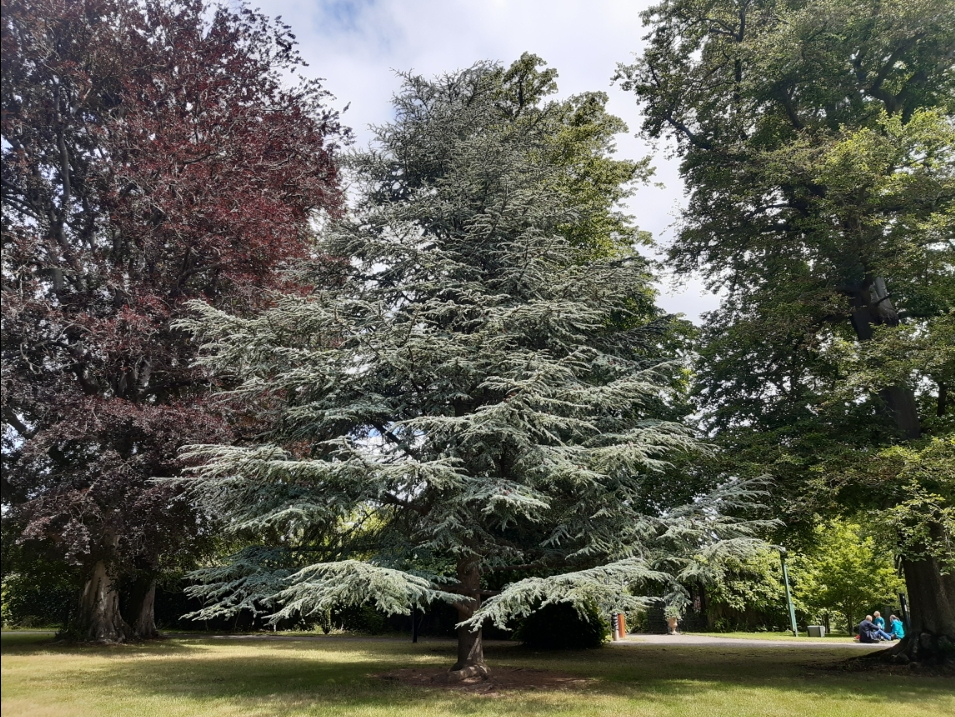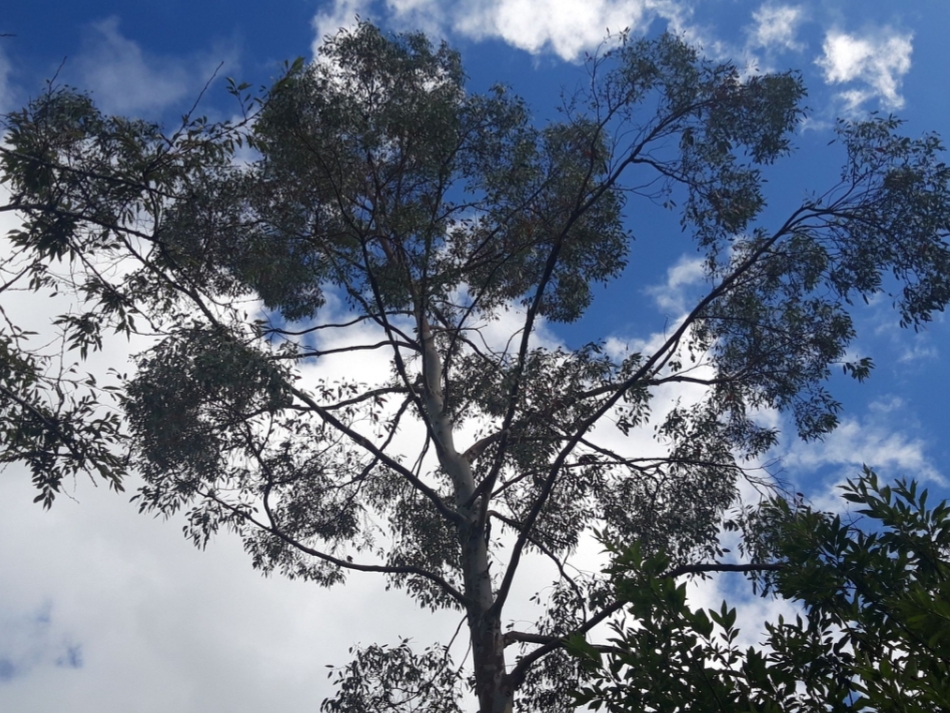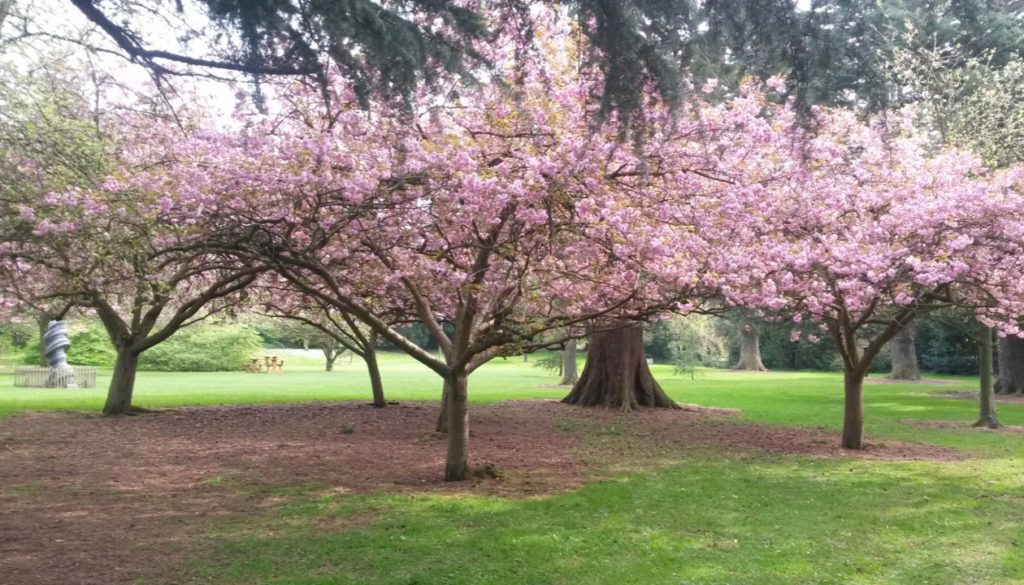By Maria O’Hanlon, Office of Public Works, Farmleigh.
The leaves aren’t quite budding yet but the blossoms will start blooming soon. National Tree Week runs from 21st to 27th March 2021. Bring your camera next time you visit Farmleigh and enter the Tree Week 2021 tree photography competition! Here are some trees to keep an eye out for while visiting Farmleigh this spring!
Thuja plicata or western red cedar. The Thuja Avenue was planted in the late 19th century by Edward Cecil Guinness, brewer and original owner of Farmleigh House and Estate. Did you find the tree with the date plaque on your walk in the grounds?

Thuja Avenue
Deodar Cedar (cedrus deodara) an evergreen conifer native to the western Himalayas. The word deodar evolved from the Sanskrit “devadāru” meaning “timber of the gods.”

Deodar Cedar
Irish Yew, Taxus baccata ‘Fastigiata,’ has upward pointing branches and comes from cuttings of a “mutant” yew tree discovered in Fermanagh, now at Florence Court. Yew trees are one of Ireland’s native evergreen species and were considered sacred in the times of druids, a gateway between heaven and earth. Often found at graveyards, their poisonous leaves and seeds kept animals out. The berries of the Irish Yew when planted grow back in the original form, as common Yew, only cuttings from the tree in Fermanagh grow with upward pointing branches.

Irish Yew
Sequoiadendron Giganteum, tallest growing tree in the world, native to North America. Feel the bark if you pass one on your walk. The soft spongy bark helps the tree survive forest fires. Find them on the way to the Boathouse Cafe and in the pleasure grounds behind Farmleigh House.

Sequoia
Holm Oak, quercus ilex, the evergreen oak or holly oak, native to the Mediterranean, adding to the shades of green in Farmleigh estate both winter and summer. Find them on your way to the lake, near the Boathouse Cafe.

Holm Oak
Cedrus Atlantica or Atlas Cedar, native to the Atlas mountains with a noticeably bluer shade compared to other evergreens. Spot them in the pleasure grounds behind Farmleigh House.

Atlas Cedar
Scots Pine, Ireland’s oldest native tree species. This coniferous tree has a life span of up to 300 years and can reach up to 40 meters in height. There are at least four of these trees in Farmleigh estate, identifyable by the redish hue on the bark.

Scots Pine
Pinus Nigra, the Austrian or Black Pines. Find them, along with a number of Holly trees, on the south side of the lake. (Avenue side.)

Black Pine
The Monkey Puzzle or Chilean Pine. “Twould puzzle a monkey to climb that tree by George,” the 18th century phrase that inspired the tree’s nickname. Araucaria araucana is native to Chile and Argentina, and its spiral arrangement of sharp rigid leaves deter predators from munching on its branches.

Monkey Puzzle
Eucalyptus. Native to Australia, nearly all eucalyptus species are evergreen. Apart from providing timber, pulpwood and food for koalas the eucalyptus is commonly used in the production of didgeridoos and its essential oil is used in antiseptics and insect repellents.

Eucalyptus
Trachycarpus Fortunei or Chinese Windmill Palm on the boathouse lawn.

Trachycarpus Fortunei
There are a variety of different Holly trees at Farmleigh. You’ll find them all around the estate and in particular near the arches leading to the courtyard. If you see the word “ilex” in the scientific name on the tree label you are most likely looking at a species of holly.

Holly
Prunus Kanzan in the Cherry Walk, planted by Gwendolen Guinness in the mid twentieth century, and on the Boathouse Lawn.

Kanzan Cherry Blossoms, Boathouse Lawn

The Cherry Walk
Yew trees in the Sunken Garden and Cherry Walk have been sculpted into topiary peacocks and spirals.

Yew
Prunus x Yedoensis or Yoshino Cherry in the Walled Garden and the Cherry Walk.

Yoshino Cherry in the Walled Garden

The Cherry Walk
Magnolia in the Walled Garden and the Magnolia Avenue planted by Miranda Guinness.

Magnolia Walk

Magnolias in the Walled Garden
Prunus Mount Fuji in the Walled Garden, where Haiku readings take place on Japan Day each April to celebrate the spring.

Prunus Mount Fuji
And a variety of evergreens on the Clock Tower Lawn.

Evergreens
Enjoy your visit and keep an eye out for more tree blogs and videos throughout the year! Click the links below to view our tree videos.


